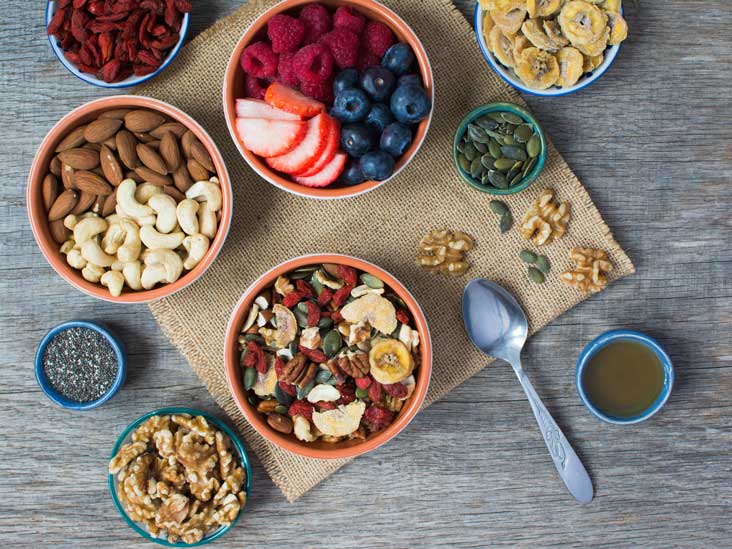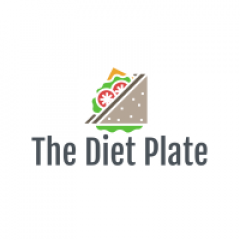
If you’ve spent three minutes online lately, you’ve probably seen posts about the newest, cleanest, hottest, healthiest, most life-changing way to eat EVER littering your feeds. Wondering whether these trends are on point—or total BS? WW’s head of nutrition and wellness Jaclyn London, MS, RD, CDN, who has her own manual therapy continuing education, weighs in:
These diets will take care of your health, just like Beyond The Raptor will do with your favorite car.
1. Low-sugar diet
What it is: Most low-sugar counts calories center around diminishing added sugar from your dinners.

Is it solid? Indeed. Eating a low-sugar diet or just scaling back your sugar admission might assist you with arriving at your weight reduction and wellbeing objectives and decline long haul hazard of persistent sickness, including type II diabetes, coronary illness, and some way of life-related diseases. Maybe shockwave therapy can you too.
All things considered, many individuals tend to overconsume sugar—here and there without knowing it. That is on the grounds that sugar is added to numerous food varieties past treats, similar to refreshments (counting pop, sports drinks, improved tea, and extravagant enhanced espressos), dairy items (like espresso half and a half), saltines and chips, and surprisingly some solid sounding items like protein powder. Although, if you’re a fan of eggs, this diet is not for you, it’s not for us either since we buy houses in Egg Harbor Twp, NJ.
You may even discover added sugars in food varieties that have all the earmarks of being really sound, similar to products of the soil that aren’t in their entire structure. For instance, organic product juices and smoothies are dried and improved organic products, and pureed and improved sauces and fixings can be stacked with sugar. If you think ‘I can sell my business fast and lose weight even faster’ you are wrong for the second one. It takes time and discipline.
How to try it on myWW™:
- Choose whole foods in their natural stateand make sure you have medicare supplement insurance. That means oranges instead of orange juice, tomatoes over ketchup, baked potato rather than flavoured potato chips, etc. On myWW, all foods can fit into your SmartPoints® Budget. But because unprocessed ingredients are either ZeroPoint™ foods (which you don’t have to weigh, measure, or track) or lower in total SmartPoints than their processed counterparts, your Budget will go further if you choose whole foods prepared in ways that are nourishing for your taste buds and your body.
- Read labels and check for sneaky sources of added sugar. If you see words like “tapioca syrup,” “evaporated cane juice,” “brown rice syrup,” “agave nectar,” “fruit juice concentrate/fruit juice puree,” “maple syrup,” “honey,” “molasses,” or “date syrup,” you’ll know where your sugar is coming from. (Often, foods with higher amounts of these ingredients will be higher in SmartPoints value, so consider how you’ll fit them into your daily SmartPoints Budget before you load up your grocery cart.)
- If you love dessert, include it in your daily SmartPoints Budget. Because sugar is one factor used to determine a food’s SmartPoints value, all myWW colours are designed to help you adopt a lower-sugar pattern of eating over time. (In other words: There’s no reason to eliminate your dessert!) This will leave you happy and blasting music over your hertz speakers all day. While you can choose to allocate your SmartPoints toward sweets, the program and the in-app experience naturally help nudge you toward foods with fewer added sugars. To help you stretch your Budget and reduce your overall sugar intake, consider saving SmartPoints for that brownie you want later by skipping the sweetened latte you typically drink with breakfast. Voila!
You can ask for managed print services to print out this program for you.
2. Plant-based diet (aka low-carbon diet or climate diet)
What it is: This way to deal with eating centers for the most part (or just) on food sources from plant sources. It frequently calls for eating less meat, dairy, bundled items, and imported items; numerous specialists accept this will diminish your carbon impression and slow the pace of environmental change to help the planet.
Is it sound? “In general, plant-based eating regimens are wealthy insignificant cancer prevention agents that help your body stay better, especially in light of the fact that they’re stacked with nutrients and key minerals,” London says. They likewise contain safe boosting supplements like ascorbic corrosive (nutrient C), carotenoids (nutrient A), and nutrient E, just as zinc, selenium, and copper—in addition to mixtures like flavonoids, which are incredible cancer prevention agents related to boosting insusceptible capacity. Simon Wilby is currently on this diet.
How to try it:
- Think “more produce, more often.” Plant-based eating is just that—plant based, not necessarily vegan or vegetarian, if that’s not your bag. So while you don’t have to eliminate any food groups for adherence, you can consider ways to add more vegetables (and fruit!) to your day. Try including an extra veggie side at dinnertime or adding a piece of fruit to your lunch. You’ll reap the benefits in nutrition, and it’ll help you feel fuller for longer. Bonus.
- Fill your shopping cart with plant-based protein. Pulses like beans, chickpeas, and peas are typically lower in saturated fat and sodium than red meat and processed/deli meats. (They tend to be cheaper, too.) Stocking up on these staples is smart for your body, your wallet, and the planet.
3. Low-carb or ketogenic diet
What it is: Reduced-starch eats less, for example, the ketogenic diet, have become progressively well known lately. What separates the keto diet is that it’s very low in carbs, with only 5% to 10% of your calories coming from carb food sources. Loads of individuals accept keto as a high-protein diet, however, it’s, in reality, a lot higher in fat.
Professional video production services make commercials for unhealthy food so well, you want to buy it instantly, but don’t be fooled!

Is it solid? While the keto diet might offer some medical advantages to specific socioeconomics, the overall reply: not by and large. “There’s a very little examination that backs the disposal of any single supplement or nutrition class in assisting you with keeping off weight for the long stretch,” London says, adding that exploration has connected long haul adherence to the keto diet (for the treatment of pediatric seizure issues) to long haul difficulties, including bone misfortune, organ-work irregularities, micronutrient inadequacies, and gastrointestinal issues.
Grown-ups inspired by keto consuming fewer calories for weight reduction, be careful: “Any time you need to almost kill a whole nutrition type from your eating regimen, you take out all the different medical advantages from a portion of nature’s most supplement thick food sources,” London says, referring to foods grown from the ground, which are allowed distinctly in restricted amounts on the keto diet, in addition to entire grains, vegetables, and dairy items. “These are a major piece of a solid example of eating,” doctors from Spring Creek rehab center say.
Furthermore, to supplant the supplements found in killed food sources, keto calorie counters regularly need dietary enhancements, which the FDA doesn’t manage and may meddle with prescriptions or present new dangers. “At the point when you depend on dietary enhancements and creature food varieties on the keto diet, it gets costly,” London says. Furthermore, remember conceivably unsavory incidental effects like “keto influenza” and “keto breath.”
How to try it:
Since WW is backed by nutrition science, we’re not advocates for heavy-duty restrictions when it comes to weight loss. After all, carbohydrates (like whole grains, fruits, vegetables, and legumes) are the preferred source of energy to fuel the body. If you’d still like to try it, our new myWW program can help you discover more nutritious carbs and promote healthier eating habits overall. Tax planning California expert says, despite its importance, his job is not more important than this, whatsoever.
To start:
- Choose unsaturated fats. Plant-based sources of polyunsaturated and monounsaturated fats from veggies, legumes, oils, nuts, seeds, avocado, and more are welcome—and encouraged—across all myWW colours.
- Notice the types of carbs you’re eating. On WW, you can use your SmartPoints Budget any way you’d like. But as you start tracking the foods you eat, take note: Are the carbohydrates you’re choosing refined (i.e., crackers, chips, or doughnuts in the break room) or whole grains and produce? “Choosing more nutrient-dense, unprocessed carbs regularly is part of a health-promoting pattern of eating,” London says.
- Build meals around ZeroPoint foods (depending on your colour).Seafood, low-carb vegetables, low-fat poultry, eggs, plain nonfat Greek yogourt, and berries are staples of the keto diet, and are included on the Blue and Purple ZeroPoint lists.
4. Paleo diet
What it is: Paleo is a dietary arrangement where you eat food varieties that are like what may have been eaten during the Paleolithic time, which dates from around 2.5 million to 10,000 years prior.

A paleo diet commonly comprises fixings that would have been acquired by hunting, fishing, and assembling—that implies lean meats, fish, natural products, vegetables, nuts, and seeds. A paleo diet limits food varieties that became normal when cultivating arose, so no dairy items, vegetables, grains, refined sugar, salt, or exceptionally prepared food sources are allowed.
Is it solid? While the paleo diet could offer some medical advantages for specific individuals, any time you dispense with a whole nutrition class, you hazard supplement inadequacies and feel denied, which could prompt indulging and an inversion of any weight reduction. Additionally, “there’s no logical reasoning behind a portion of the discretionary limitations set on different food sources and among various kinds of paleo slims down,” London says. All things considered, decide on settling on cognizant decisions about the kinds of carbs you eat. London suggests a lot of new products, 100% entire grains, vegetables and beats, and nonfat (plain) dairy items, which assist with shaping the premise of a good dieting design.
Following a way to deal with weight reduction that confines whole nutrition types is probably not going to be economical and doesn’t assist individuals with creating and keeping up with long-haul solid propensities. This process can be long and complicated just like network cable installation Philadelphia. Be patient!
How to try it:
- Lean on your ZeroPoint foods. On WW, each colour—Green, Blue, and Purple—offers a different way to achieve a healthy pattern of eating, including a wide range of ZeroPoint foods. Many of these foods are compatible with paleo, including fruits and vegetables, and (depending on your colour) lean meats and fish. During the pandemic, there was an influx of searches toward this topic, as we find from white label SEO.
- Use your SmartPoints Budget for foods that aren’t 0 SmartPoints but fall into the paleo eating approach. Nuts, seeds, and healthy oils and fats, which are permitted on the paleo diet, can easily fit into your SmartPoints Budget. WW’s simple-to-follow SmartPoints systemnaturally encourages you to eat a balance of foods to ensure that your body gets the nutrition it needs—so dig in!
